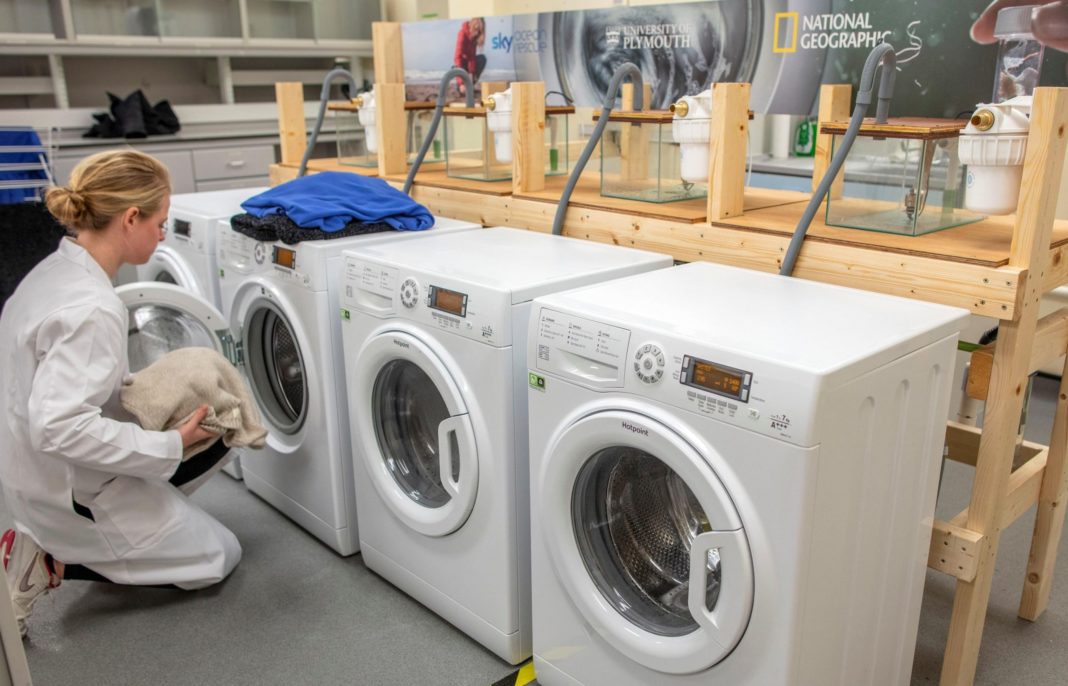Using fiber-catching devices as part of the laundry process can dramatically reduce the amount of microscopic particles potentially entering the marine environment, according to new research.
A study conducted at the University of Plymouth compared the efficiency of six different devices, ranging from prototypes to commercially available products.
The most successful reduced the amount of fibers released into wastewater by almost 80%, suggesting there is considerable potential for them to have environmental benefits.
However, writing in Science of the Total Environment, researchers from the University’s International Marine Litter Research Unit say they will only ever be part of any solution.
A recent study at the University showed normal wear and tear when wearing clothes is just as significant a source of microplastics as release from laundering, while a report produced for Defra in May 2020 highlighted that fitting filters to washing machines could be less effective than changing fabric designs to reduce fiber loss.
As such, the current study’s authors say there is an ongoing need for scientists to collaborate with industry and policymakers to ensure improvements are made right from the design phase through to how clothes are washed.
The study was funded by the National Geographic Society and Sky Ocean Rescue.
Research Fellow and National Geographic Explorer Dr. Imogen Napper, a Sky Ocean Rescue Scholar and the study’s lead author, said: “Fibres from clothing are among the key sources of microplastics, and companies are inventing ways which claim to reduce the amount of fibers which enter wastewater. We wanted to see how effective they were both in catching fibers, but also stopping clothes from shedding them in the first place. Our results show there is a huge variety between the devices available, with some significantly reducing the number of fibers released.”
For the research, scientists washed three different synthetic fabric types (100% polyester, 100% acrylic, and a 60% polyester/40% cotton blend) to represent a typical mixed load.
They used a mesh to capture fibers entering wastewater, measuring the mass of particles generated without filters and then with three in-drum devices and three external washing machine filters.
The results showed the most effective device reduced the quantity of microfibres being released by 78%, while the least effective analyzed in this particular study reducing it by 21%.













![Hotstar Premium Cookies 2019 [*100% Working & Daily Updated*] Hotstar Premium Cookies 2019 [*100% Working & Daily Updated*]](https://tahav.com/wp-content/uploads/2019/11/Hotstar-Premium-Cookies-Free-100x70.jpg)



